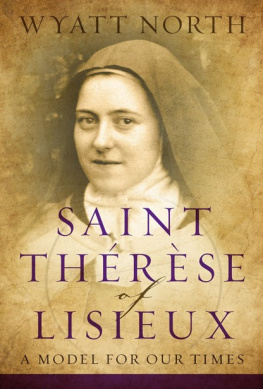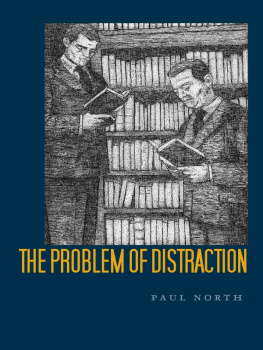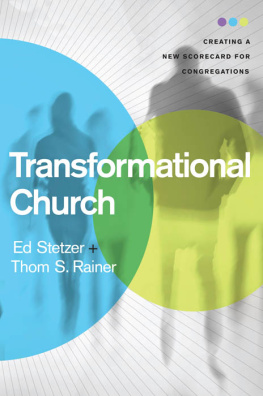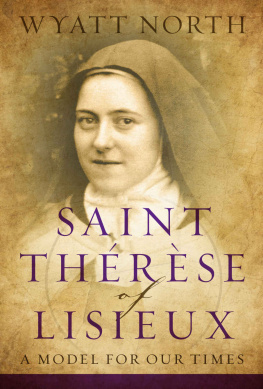Thank you for downloading this Wyatt North eBook
Never miss a free book from Wyatt North, and receive FREE inspirational eBooks for your eReader!
Thousands of readers have already joined. Sign up for free today.
Click here for free eBook offers!
Wyatt North Publishing, LLC 2015
Publishing by Wyatt North Publishing, LLC. A Boutique Publishing Company.
Wyatt North and A Boutique Publishing Company are trademarks of Wyatt North Publishing, LLC.
Copyright Wyatt North Publishing, LLC. All rights reserved, including the right to reproduce this book or portions thereof in any form whatsoever. For more information please visit http://www.WyattNorth.com .
Cover design by Wyatt North Publishing, LLC. Copyright Wyatt North Publishing, LLC. All rights reserved.
Scripture texts in this work are taken from the New American Bible, revised edition 2010, 1991, 1986, 1970 Confraternity of Christian Doctrine, Washington, D.C. and are used by permission of the copyright owner. All Rights Reserved. No part of the New American Bible may be reproduced in any form without permission in writing
Introduction
St. Thrse of Lisieux (18731897) is one of the most popular saints in modern times. What makes her life so outstanding and such an inspiration to so many people? She had no sustained spiritual visions, unlike St. Bernadette of Soubirous before her or the three children of Ftima after her. She had no stigmata, was not a martyr, was not a teacher during her lifetime, and did not start a religious order. Her life was sealed off, as it were, from the rest of the world in a cloistered convent. How did she become so well-beloved around the world?
This book is an attempt to explain why the life of Thrse is so special and how her spirituality of the Little Way is a perfect remedy for the spiritual maladies that plague our modern world. Through her Little Way, Thrse climbed to the heights of mystical union with God, and through this union she was able to spread the sphere of her influence to the entire world.
The first chapter offers an account of Thrses parents, Louis Martin and Zlie Gurin. The subsequent chapters up through chapter sixteen describe the life of St. Therese. Finally, the last three chapters focus on Thrses rise as a star saint in the Catholic Church, culminating in the declaration of St. Thrse of Lisieux as a Doctor of the Church. Throughout this book, Thrses infectious love of Christ, the beauty of her brief but passionate life, and her sincere desire that all may be one with God will shine through.
Like a comet, her life was brief but made a lasting impression on all who were privileged enough to observe it. Like a second star of Bethlehem, she flew through the heavens toward God, pointing the way to Jesus; and like the three Magi, those who saw the star testified to what they had seen: a symbol of the Savior of the world.
Of course, Thrse would not have used these terms to describe herself. Her favorite image, and the one she used at the start of her autobiography, is that of a little white flower (Thrse of Lisieux, 13). This metaphor brings Thrse closer to the ground and indicates her smallness, thereby emphasizing her humility; nevertheless, the metaphor of the comet is strikingly apt.
St. Thrse was a Carmelite. In order to understand her spirituality, one must be acquainted with the charism of the Carmelite Order. The Carmelites were established in the thirteenth century in the Holy Land by a group of hermits who received a rule from St. Albert of Jerusalem. Their inspiration is the Old Testament prophet Elijah, who was zealous for the Lord of hosts. Carmelites view Elijah as their spiritual father and see their quest for contemplative union with God as a continuation of the prophetic school founded by Elijah.
One of the central tenets of the Carmelites is that God can be experienced through prayer. This, of course, naturally follows from belief in Gods existence. The experience of God for which the Carmelites strive reaches its apex when the Carmelite enters into a perfect union with God, something that mystics call the spiritual marriage. However, this union is only acquired after the great suffering that is experienced in the dark night of the senses and the dark night of the soul, as described by St. John of the Cross. St. Thrse, as we shall see, was already naturally disposed to contemplating God even before she entered the Carmelite convent. The message of Carmel and St. Thrse is clear: God exists and is calling all of us to love him!
To be clear, this radical emphasis on faith is not a leap into the absurd, but is based on reason. Philosophy can only reach so far. According to Blaise Pascal, philosophy only grants one access to the God of the philosophers, not the God of Abraham, Isaac, and Jacob. St. Teresa Benedicta of the Cross, another great Carmelite who was known as Edith Stein before she became a nun, recognized this well. She had earned a Ph.D. in philosophy working under Edmund Husserl in the field of phenomenology but soon became aware that reason needs faith in order to complete its quest for ultimate meaning and truth. This amounts to saying that if one is to gain access to this truth, one must become a mystic. This is why the Carmelite emphasis on contemplative prayer and the life of St. Thrse of Lisieux are completely in accord with reason.
St. Thrse was not a philosopher by any means, but because contemplative union with God is what God ultimately intends for all of us and fulfills our desires for wisdom and eternal truth, St. Thrse has much to teach those who would acquire wisdom by any means necessary. Her simplicity is disarming, and her spirituality is so fragrant and enlivening that, if one accepts what she writes, one cannot help but feel a profound sense of peace. Her path of the Little Way has inspired innumerable people in their quest for God. May all who read about St. Thrse of Lisieux be inspired by this wonderful saint and be rejuvenated in their spiritual lives.
Louis Martin and Zlie Gurin
Bourdeaux is an ancient city that fell under Roman rule around 60 B.C. Situated near the southwestern coast of France, near the Atlantic, it was an important trade city. Distinctively French, this city saw paganism, the rise of Christianity, and the acceptance of Christianity as the national religion, whereby French Catholicism gained the name of the eldest daughter of the Church. The citys most famous commodity, of course, was and still is wine.
It was in this city that Louis Martin was born in 1823. He was descended from a line of soldiers. Having been raised in a military environment, it is quite possible that he heard stories of Napoleon while he was a boy. Louis, however, was not interested in military glory. He has been described by some as a romantic and a free spirit.
Louis had a pensive, solitary, and pious disposition. He had wanted to become a Benedictine monk in the Swiss Alps and applied for candidacy, but he was rejected on account of his lack of training in Latin. Determined not to give up, he decided to hire a Latin tutor, yet could not master the language at the level the monastery required. Therefore, he gave up this endeavor after a year and a half and instead learned the skill of watchmaking.
He eventually settled in Alenon, a town about a hundred miles west of Paris. The town was small, having a population of only 13,600 at the time. Here Louis would spend his days making watches, traveling, praying, reading, and fishing. Through such activities Louis was able to experience the kind of solitary life he craved while living with his parents. He also spent a lot of time with the local Catholic Club, but was not especially interested in socializing. Above all, Louis cherished independence and his faith. He was not too concerned about getting married. His mother, however, did have this concern. She noticed a young woman whom she thought would be a perfect match for Louis: a certain Mademoiselle Gurin, who was an excellent lacemaker.
Next page















